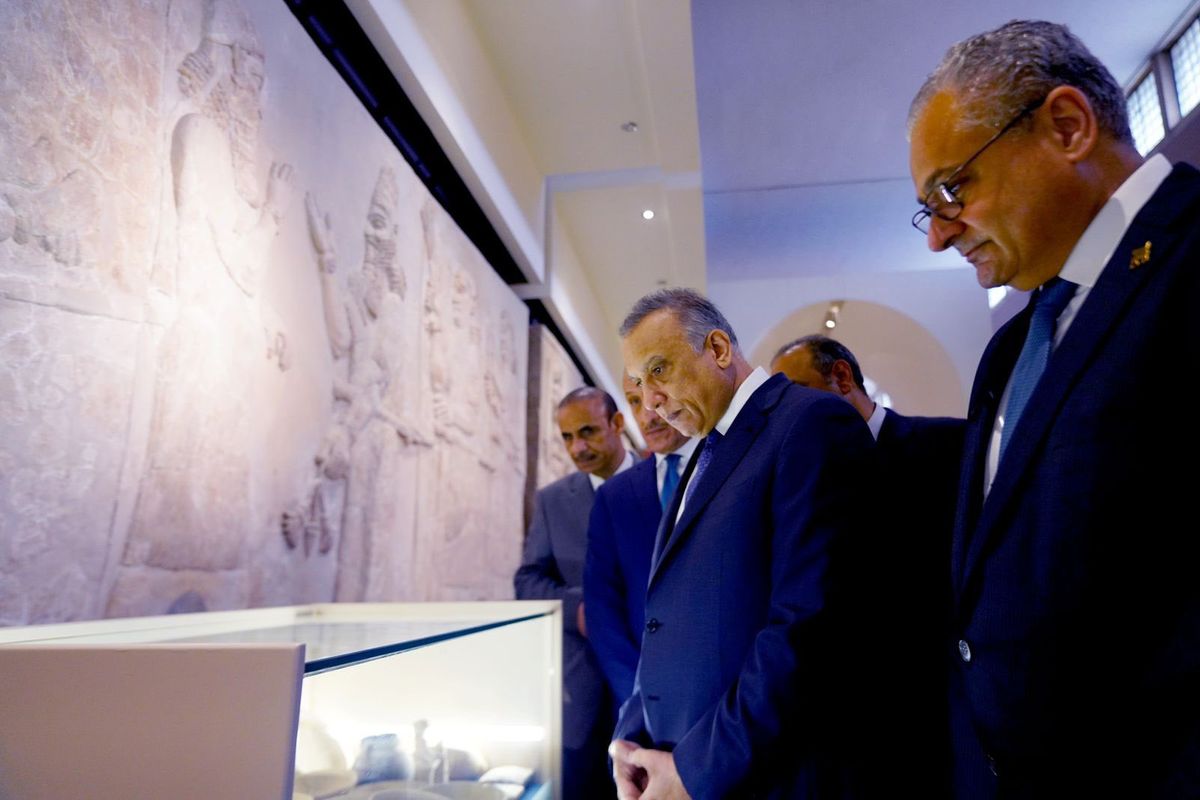The long-suffering Iraq Museum, a poignant symbol of the nation’s shifting fates, reopened in Baghdad on 7 March after a three-year hiatus.
Founded in 1923 and looted after the 2003 invasion of Iraq, the treasure trove of ancient Mesopotamian and Islamic heritage had its official reopening in 2015. But it closed its doors again in 2019 amidst a growing anti-government protest movement that was subsequently and often violently quelled.
The Covid-19 pandemic was also a factor in the extended closure, Laith Majid Hussein, the head of Iraq’s antiquities authority, told the Agence France-Presse.
The office of the prime minister Mustafa al-Kadhimi, who inaugurated the museum on 6 March, said in a statement on Twitter that the reopening followed “a long period of maintenance and rehabilitation”.
Many international agencies have contributed to the museum’s restoration since it was ransacked in the 2003 invasion, when the then US defence secretary Donald Rumsfeld infamously commented, “stuff happens”, after pleas for protection from museum staff were ignored.
In the immediate aftermath of the looting, a Unesco mission addressed the theft of cultural objects and the preparation of an inventory for the museum, and last year the UN agency donated equipment, conservation and storage materials. The Italian-Iraqi Centre for the Restoration of Monuments also assisted with reconstruction efforts from 2003 to 2012.
The late Lamia al-Gailani Werr, the first Iraqi woman to study archaeology abroad and the first to get a PhD in the subject, notably spearheaded efforts to protect the museum both before and after the invasion.
Iraq’s cultural heritage faced wider issues of neglect during the 12 years of UN sanctions before the war as well as risks to sites in the post-invasion chaos and power vacuum. As a result of draconian sanctions, the Iraq Museum was deprived of the chemical products needed for restoration, which were blocked at the border, along with chlorine for water purification and spare parts for infrastructure. These threats were exacerbated by the destruction of heritage and trafficking of antiquities by Isis militants from 2014 to 2017.
Around a third of the estimated 15,000 objects looted from the museum in 2003 have since been returned. In the past year, the Iraqi government has recovered more than 18,000 artefacts, most of them from the United States, including the prized 3,500-year-old Gilgamesh tablet.
Now, amongst other ancient treasures, two lamassu statues of human-headed winged bulls (883-859BC) from the palace of the Assyrian king Ashurnasirpal II at Nimrud are back on display at the museum, a testament to the indomitable Iraqi culture that has weathered centuries of war and invasions.


